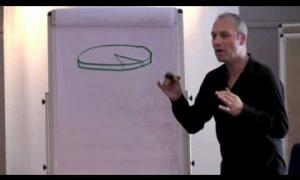What we’re doing when we’re writing a vision
March 22, 2010
By Glynn Young
Twenty years ago, I was writing a speech for a CEO. He was to be speaking at a meeting of what one might call critics, at various stages of friendliness toward the company. He didn’t really have a good grasp as to what his subject should be, and we had gone through a series of discussions of ideas submitted by me and a lot of others.
He wanted to make a statement that would tell the audience that he understood their concerns, that he identified with their concerns, and that he was doing something to address them. Other company executives had come forward with plans and proposals, but the price tags were potentially horrendous. He was taken with several of the ideas, but he balked at the cost (and his investors would balk, too, if they saw the estimates).
His challenge to me was this: is there a soft path to get to the hard decisions? Could we chart a course that would get to where we needed to go?
And I wasn’t to talk with anyone about what he had asked me to do.
The project was one of the most intense writing assignments I’ve ever undertaken. I read and researched. I wrote draft after draft. I read and researched some more. I finally reached a point where I was ready to submit a draft to him.
As the text of the speech draft moved toward conclusion, I had included what I thought was a rhetorical device – a repetition of a phrase that summarized the ideas expressed in the speech. The phrase was “It is our pledge,” and I used it seven times to express seven ideas and imply seven commitments.
He didn’t call it this, and I didn’t call it this, but essentially what he had asked me to do was to write a statement of vision for the company – a vision of what might be and what could be. Previously, all we had were financial goals.
He gave the speech. It became known as “The Pledge.” It upended the company and the industry.
Rereading it now, it’s still oddly current. But I realize something about it now that I didn’t understand then. It is not a “religious” or “spiritual” statement by any stretch of the imagination. But it is shot through with moral principles, principles like stewardship, loving your neighbor and sacrificial acts.
And I realized that, acknowledged or not, all vision statements I’ve ever seen come from the same source or impulse. It’s as if we’re all, in one way or another, attempting to reach toward the same standards or principles, something beyond us, what Lincoln called “the better angels of our nature.”
A veteran speechwriter, Glynn Young directs online strategy and communications at Monsanto Co.



